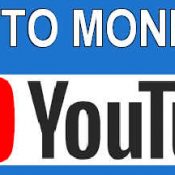How to set online advertising rates.

Multiple Online Income Streams Build Business Success
Content websites that develop multiple streams of online income end up with better odds of meeting or even exceeding their advertising goals.
They also increase their odds of surviving as a business. (more…)

Advertiser Retention Rates Depend on Tracking Results
Advertiser retention rates rise when publishers track and adjust campaign performance on a regular basis.
A question came up one day about the retention rates of our online display advertisers. We were surprised by the answer. (more…)

Yield Optimization Increases Revenue with Leftover Ad Impressions
Yield optimization is one of the lesser known concepts in online advertising. It leads to higher revenue through better inventory management.
It starts with the basic idea that a site publisher or sales team may not be able to sell out 100 percent of all ad impressions on a site. Yield optimization also applies to sites that use only network providers such as Google AdSense.

AdSense Earnings Down? You Are Not Alone
AdSense earnings regularly go down for some sites and keep growing for others for many, many reasons. But some disturbing trends point to red flags about the future for AdSense partners.
First, some background. Google AdSense is one of the greatest product developments on the Internet. The company brilliantly decided to expand its search advertising inventory by allowing other websites to publish its ads and split the revenue with a healthy 68 percent going to its publishing partners. (more…)

YouTube Monetization Rate Depends on 7 Factors
The YouTube monetization rate is a major factor in the financial success or failure of a video channel.
Monetization determines whether a video gets any ads, how many ads it gets and the rate of revenue the ads produce. (more…)

How to Build Online Rate Cards
Online rate cards are more than just the rates themselves. They also are about the presentation and promotion.
The most brilliantly devised rate card won’t deliver results if it is hard to read, confusing and overly complicated. (more…)

Online Advertising ROI: 3 Useful Metrics to Know
Online advertising ROI or return on investment is a major consideration for anyone who focuses on response rates more than branding.
Response and branding are the two primary benefits of any advertising campaign. But every campaign has varying degrees of response and branding. Some are mostly or entirely response oriented and others emphasize branding.
 Promise Media offers online business tips and best practices for content-rich websites.
Promise Media offers online business tips and best practices for content-rich websites.